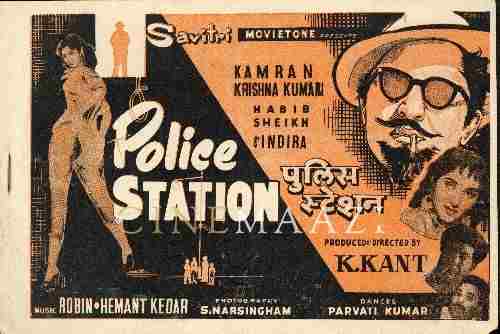Lata Mangeshkar
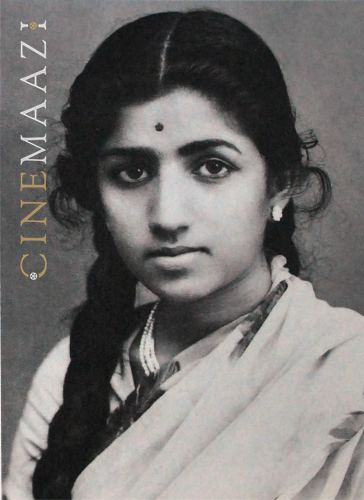
- Real Name: Lata Mangeshkar
- Born: 28 September, 1929 (Indore, India)
- Died: 6 February, 2022 (Mumbai, India)
- Primary Cinema: Hindi
- Parents: Deenanath Mangeshkar, Shudhamati
Lata Mangeshkar, often regarded as the greatest singer of the 20th century, has lent her voice to four generations of heroines, an unparalleled and iconic phenomenon in Hindi cinema. With Lata's unbelievably sensitive rendition, almost every song she has sung has become immortal. Lata has the art of modulating her voice according to the personality of the star. She has sung songs in over 36 regional Indian and foreign languages, though primarily in Hindi and Marathi. Lata Mangeshkar has also rendered superb melodies in more than two dozen Punjabi films that may never be replicated.
Lata Mangeshkar was born to Pt. Deenanath Mangeshkar and his second wife Shudhamati on 28th September, 1929 in Indore. Her father was a reputed classical singer and had owned a theatrical company. Lata was named Hema at her birth. Her parents later renamed her Lata, after a female character Latika in one of her father's plays, Bhaaw Bandhan. An attack of smallpox at the age of two years had left permanent scars on her face. Lata had no formal education but she learnt music under the tutelage of her father and gifted singers like Aman Ali Khan and Amanat Khan. She played the role of Lord Krishna in the play Gurukul (1939). In December 1941 at the age of 12 years she made her debut as a singer with All India Radio for whom he recorded two songs at the studio.
Lata sang the song Naachu Yaa Gade composed by Sadashivrao Nevrekar for Kiti Hasaal (1942). However, her first playback song was chopped off at the editor's table. After the death of her father, she had to shoulder the responsibility of feeding four younger siblings. Lata put on full war paint to act and sing in the film Pahili Manglagaur (Marathi, 1942). She played the heroine's sister and sang three songs. Her first Hindi song was Mata Ek Sapoot for a Marathi film Gaja Bhau (1944) and Paa Lagoon Kar Jori for Hindi movie Aap Ki Seva Mein (1946) which was composed by Datta Dawjekar. Lata and her sister Asha played minor roles in the film Badi Maa (1945). Lata played child/ small roles in eight Hindi/ Marathi films before riding the crest of popular singing.
Master Ghulam Haidar, struck by the range and sweetness of young Lata's voice, took her to Sashadhar Mukherjee of Filmistan. However, Mukherjee rejected her saying that the “poor little thing” had a “squeaky” voice. However, Masterji told him, "A day will arrive when the entire industry will spread a red carpet for this girl." The prophecy of Masterji turned out to be true. Masterji gave her a big break with the song Dil Mera Toda in Majboor (1948).
The following year, four of her films - Mahal, Dulari, Barsaat and Andaz proved runaway hits. Lata Mangeshkar became a household name with the unprecedented popularity of the eight-minute song Aayega Aanewala (Mahal). Lata never looked back thereafter. Though her singing style was initially reminiscent of Noorjehan, she soon developed her own distinctive style.
By the mid-1950s, Lata Mangeshkar became the top-ranking female playback singer in the Hindi film industry. Among the great composers she worked with, Anil Biswas is supposed to have helped a lot in honing her playback skills. Everything from learning the significance of words to breath control, Lata mastered in her collaborations with him. She used to rehearse for hours at his house. She sang over 120 songs for him in 30 films starting with Anokha Pyar and Gajre in 1948. Some of her notable songs with him are Yaad rakhan chand taaron is raat ko and Mere liye woh gham-e-intezaar (Anokha Pyar), Tumhare bulane ko jee chahta chain (Laadli, 1949), Paas balam chori chori aa (Lajawab, 1950), Man mein kisi ki preet (Aaram, 1951), Kaahe naino mein kajra bharo (Badi Bahu, 1951), Beimaan tore nainwa (Tarana, 1951), Ek pal ruk jaana (Raahi, 1953), Rooth ke tum jo chal diye (Jalti Nishani, 1957), Intezar aur abhi (Char Dil Char Rahen, 1959) and Ja re ja balamwa (Sautela Bhai, 1962). C Ramchandra, who went on to create some unforgettable melodies with Lata met her for the first time when he was an assistant to Anil Biswas for Girls School (1949).
Another mentor figure for the young Lata Mangeshkar was Khemchand Prakash. Their collaboration is mostly known for the immortal Aayega aanewala (Mahal, 1949) which is one of the greatest vocal performances in film history. The song truly started the Lata Mangeshkar phenomenon. Other than that, they also created songs like Chanda re ja re ja re (Ziddi, 1948).
Naushad, was no exception to those who were enamored by her talent. He gave her a huge early career hit in Andaz (1949). Some of their most memorable songs are Lagan more man ki (Babul, 1950), Tu kaun hai mera kehde balam (Deedar, 1951), Tu Ganga ki mauj (Baiju Bawra, 1952), Aaj mere man mein sakhi (Aan, 1952), Jaane waale se mulaqat (Amar, 1954), Marna teri gali mein (Shabaab, 1954), Khuda nigehbaan ho tumhara and Pyar kiya to darna kya (Mughal-e-Azam, 1960), Dil mein baji pyar ki shehnaiyan (Kohinoor, 1960), Tere pyaar mein dildar jo hai mera haal-e-zaar (Mere Mehboob, 1963) and Phir teri kahaani yaad ayi (Dil Diya Dard Liya, 1966).
She also worked extensively with Shankar Jaikishan, singing memorable songs in films like Parbat (1952), Daag (1952), Chori Chori (1956), Anaadi (1959), Chhoti Behan (1959), Dil Apna Aur Preet Parai (1960), Ek Phool Chaar Kaante (1960), Jis Desh Men Ganga Behti Hain (1960), Asli Naqli (1962), Dil Ek Mandir (1963), Amrapali (1966) and many more. The first song Shankar Jaikishan recorded for their debut in Barsaat, Jiya beqarar hai, was sung by Lata Mangeshkar.
Roshan also had a very fruitful partnership with Lata Mangeshkar. Lata also stood by him when the producers of Mehbooba (1954) tried to replace him with O P Nayyar midway through the production. Their collaborations produced great songs in Malhar (1951), Nau Bahar (1952), Barsaat Ki Raat (1960), Aarti (1962), Zindagi Aur Hum (1962), Mamta (1966) and Bahu Begum (1967).
Her work with C Ramchandra is a treasure trove of melodies. Some of their memorable songs are Dil se bhula do tum hamein (Patanga, 1949), Mehfil mein jal uthi shama (Nirala, 1950), Gore gore o banke chhore (Samadhi, 1950), Koi kisi ka diwan ana bane (Sargam, 1950), Sham dhale khidki tale (Albela, 1951), Dil ki kahani to chahe (Sagai, 1951), Ai pyar teri duniya se hum (Jhanjhar, 1953), Yeh zindagi usi ki hai (Anarkali, 1953), Kitna haseen ye mausam (Azaad, 1955), Kaise aaun Jamuna ke teer (Devta, 1956), Dil ki duniya basa ke (Amar Deep, 1958) and many more. They also the immortal patriotic song Ae mere watan ke logon in commemoration of the soldiers killed in the Sino-Indian War of 1962.
One of her most storied collaborative relationships was with S D Burman, with whom she had a fallout which led to them not working together from 1958-62. Their first collaboration was in Mashal (1950). They continued working together in Sazaa (1951), Naujawan (1951), Taxi Driver (1954), House No. 44 (1955), Devdas (1955), Paying Guest (1957). After the rift, the first film they worked together in was Dr. Vidya (1962). Some unforgettable songs followed like Mora gora ang lai ke (Bandini, 1963), Aaj phir jeene ki tamanna hai and Piya tose naina lage re (Guide, 1965), Hothon pe aisi baat (Jewel Thief, 1967), Kitni akeli kitni tanhaa (Talash, 1969), Rangeela re (Prem Pujari, 1970), Khilte hain gul yahaan (Sharmeelee, 1971) and Piya Bina (Abhimaan, 1973).
Her association with Madan Mohan began from the 50s and continued till the 70s. She sung for him in films like Baghi (1953), Railway Platform (1955), Pocketmaar (1956), Dekh Kabira Roya (1957), Adalat (1958), Anpadh (1962), Woh Kaun Thi? (1964), Mera Saaya (1966), Chirag (1969), Dastak (1970), Hindustan Ki Kasam (1973), Hanste Zakhm (1973), Mausam (1975) and Laila Majnu (1976).
She also sang for Sajjad Hussain in Sangdil (1952), including the memorable Dil mein sama gaye saajan. Although Ravi preferred Asha Bhosle as his primary female singer, Lata Mangeshkar also delivered hits for him in films like Ghunghat (1960), Chaudhvin K Chand (1960), Tower House (1962), Bharosa (1963), Khandaan (1965), Do Badan (1966) and Ankhen (1968). Under the aegis of classical maestro Pandit Ravi Shankar, she sang for Anuradha (1960). Perhaps the only major composer with whom she did not collaborate was O P Nayyar, who had been unimpressed by the quality of her voice.
In the 70s she mostly worked with R D Burman and Laxmikant Pyarelal. She sang for R D Burman’s first film Chhote Nawab (1961) and later went on to give many hits with him in the 70s. Some of their most notable songs are Kya janu sajan (Baharon Ke Sapne, 1967), Baahon mein chali (Anamika, 1973), Na koi umang hai (Kati Patang, 1971), Dilbar dil se pyaare (Caravan, 1971), Raina beeti jaaye (Amar Prem, 1972), Phoolon ka taaron ka (Hare Rama Hare Krishna, 1971), Beeti na bitai (Parichay, 1972), Jab tak hai jaan (Sholay, 1975), Tere bina jiya lage na (Ghar, 1978), Sawan ke jhoole pare hai (Jurmana, 1979) and many more. Their collaboration will continue to produce gems in the 80s in films like Alibaba Aur 40 Chor (1980), Phir Wahi Raat (1981), Sitara (1980), Love Story (1981), Agar Tum Na Hote (1983), Masoom (1983), Sunny (1984), Arjun (1985), Saagar (1985) and Libaas (1988). Her songs for Pakeezah (1972), composed by Ghulam Mohammad have become timeless classics.
She was a prolific singer for Laxmikant Pyarelal, singing over 700 songs for them. Laxmikant and Pyarelal were part of the Sureela Bal Kala Kendra, which was run by Lata Mangeshkar’s family. She sang for them in Mr X in Bombay (1964), Aaye Din Bahar Ke (1966), Milan (1967), Shagird (1968), Intaqam (1969), Do Raaste (1969), Jeene Ki Raah (1969), Abhinetri (1970), Jal Bin Machhli Nritya Bin Bijli (1971), Piya Ka Ghar (1971), Mera Gaon Mera Desh (1972), Daag (1973), Bobby (1973), Satyam Shivam Sundaram (1978), Sargam (1979), Aasha (1980), Karz (1980), Dostana (1980), Ek Duuje Ke Liye (1981), Prem Rog (1982), Hero (1983), Sanjog (1985), Ram Avtar (1988), Ram lakhan (1989) and many more.
In the 80s she also gave some unforgettable songs with Khayyam like Hazaar raahein mud (Thodisi Bewafai, 1980), Na jaane kya hua (Dard, 1981), Chandni raat mein (Dil-e-Nadaan, 1982), Aaja nindiya aaja (Lorie, 1984), and Kiran kiran mein shokhiyan (Ek Naya Rishta, 1988). Other music directors she worked with at this time were Hridaynath Mangeshkar, Bappi Lahiri, Shiv Hari, Ravindra Jain, Usha Khanna, Amar Utpal and Uttam Jagdish.
Her career rolled on undisturbed by the sweeping changes the 90s brought. She worked with music composers like Anand Milind, Jatin Lalit, Nadeem Shravan, Anu Malik, Aadesh Shrivastava and A R Rahman. She also recorded ghazals with Jagjit Singh. She also sang her last song for R D Burman in 1942: A Love Story (1994).
From the 2000s she became more selective in her film recordings, as ill-health prevented her from maintaining the same level of activity. Her last song in Hindi cinema has been Tere hansne se mujhe aatee hain hansee (Satrangi Parachute, 2011).
Lata Mangeshkar’s talent allowed her to transcend linguistic boundaries and work in Malayalam, Tamil, Telugu, Kannada, Bengali, Marathi, Oria, Chattisgarhi, Maithili, Magadhi, Assamese, Garhwali, Dogri, Bhojpuri, Sindhi, Konkani, Swahili, Malay, Sinhali and Nepali languages as well. In Malayalam she sang her only song for Salil Chowdhury in the film Nellu (1974). In Tamil she has sung of Ilaiyaraaja in films like Anand (1987), Sathya (1988) and En Jeevan Paduthu (1988) as well as for Naushad for the Tamil version of Aan (1952). In Telugu she has sung for Santhanam (1955), Dorikithe Dongalu (1965) and Aakhari Poratam (1988). She sang for Kranthiveera Sangolli Rayanna (1967) in Kannada. She sang for the Gujarati film Mehndi Rang Lagyo (1960). She also sang in the Meitei language for the film Meichak (1999).
She made her Bengali debut with the song Prem ekbari esechilo nirobe composed by Hemant Kumar. She worked extensively with Salil Chowdhury, giving hits like Ja re ude ja re pakhi (the Hindi version of which appears in Maya, 1961), Na jeo na rajani ekhono baki, Ogo ar kichu to noy. Her other frequent collaborator was Sudhin Dasgupta. Her major hits in Bengali were Akash prodip jole, Ekbar bidaye de ma, Saat bhai chompa, Nijhum sandhyay (Monihar, 1966), Chanchal mon anmona (Adwitiya, 1968), Asharh srabon (Monihar, 1966), Aj mon cheyeche (Sankha Bela, 1966) among others. In all, she sang over 200 songs in Bengali, including many non-film songs. In Marathi she sang over 400 songs. She also sang Sanskrit shlokas composed by her brother Hridaynath Mangeshkar.
A treasure trove of unparalleled Punjabi music flowed from the God gifted vocal chords of Lata Mangeshkar during her younger years. It was Master Hansraj Behl who introduced Lata to Punjabi cinema through the Punjabi film Lachhi (1949). Out of 11 songs of this film, Lata sang seven songs: Naale Lammi Te, Kaali Kanghi Naal, Do Milde Hoye, Haada Ve Channa, Tumba Vajdae Na, Sharaab-e-Ishq, Hum Ne Tere. All the songs became popular on both sides of the border. Earlier, another Punjabi music director, Eric Roberts Vinod recorded three songs of Chaman (1948) film: Galiyan Wich Phirde, Raahe-Raahe Jaandeya and Asaan Bekadran Naal in Lata’s emotional voice for gramophone records version only. All the three numbers became landmark songs.
Her Punjabi folk-based song Laara Lappa Laara Lappa Laayi Rakhda in the Hindi film Ek Thi Larki (1949) became a rage throughout the country. Soon afterwards Vinod composed the music for the Punjabi film Bhaiyaji (1950) with five gems by Lata. The emotional song Jhil Mil Tariya Ja Akhiyan Na Maar Ve was brilliantly rendered by her. Other songs Challan morni di chaal, O ni main, Ke badaliyan, Aa kudiye, also became hits with the audience.
After the magical success of Lachhi and Bhaiyaji, Lata became the favourite singer of Punjabi music directors. Ustad Allah Rakha Qureshi contracted her to record three songs - Rassi Utte Tangeya Dupatta, Puchh Mera Haal, Assan Takkeya Mahi for Madari(1950) and four songs - Main Addiyaan Chukk-Chukk, Raatan Andheriyan, Main Haunke Bhar-Bhar and Koi Kar Lai Dilan in Phumman (1951). Lata rendered these songs by pouring her heart out. After her three years’ magnificent contribution to Punjabi film music, Lata felt that all was not well with Punjabi cinema, and so she started shying away from Punjabi films.
However, on the persuasion of singer/actor Shaminder Singh Chahal, a landlord from Muktsar, Lata Mangeshkar reluctantly agreed to give playback for the musical bonanza Vanjara (1954). She rendered seven out of 9 hit songs - O…charkhe diyan ghookan, Maraan kandhaan, Piplan di thandi, Peenghan de utte, Uche chubaare waliye, Saade pind wich, Jag ja ni under the music direction of Sardul Kwatra. Pandit Husnlal-Bhagatram got one soulful song Jad raat…hanjhuan de tel wich in the melodious voice of Lata Mangeshkar for the film Shah Ji (1954). All these melodies featured in the annual musical charts.
She had virtually no time slot for regional cinema except Marathi films. After a gap of six years, music composer Shri Guru Bachan recorded four solos in Lata’s voice for Pagri Sambhal Jatta (1960). She also crooned a romantic duet - Asaan Keeti Ae with Rafi in Do Lachhian (1960). Lata sang two melodious duets - Pyar De Bhulekhe and Saanu Takk Ke with Rafi in Guddi (1961). In 1963, Lata sang one song each in Laajo and Pind Di Kuri. In Geet Bahaaran De (1964), Lata rendered five melodies: Tu Te Saun Gayi, Ik Paase Tahli, Ve Channa Akhiyan, Kikkli Kaleer Di under the music direction of Datta Ram.
Her last song for Punjabi films was Mathe Ute Tikka Lake in Mehandi Shagna Di (1992). Apart from singing in Punjabi films, Lata has also rendered an LP record Mil Mere Pritama Jiyo- Lata Sings Gurbani which was issued by HMV in 1979. Hridayanath Mangeshkar recorded one Punjabi song Heer Aakhdi Jogia in 1978.
Lata Mangeshkar produced four films namely Vaadal (Marathi, 1953), Jhaanjhar (1953), Kanchan Ganga (1955) and Lekin… (1990). She has also composed music for five Marathi films under the pseudonym Anand Ghan.
Lata Mangeshkar has recorded albums of all genres including bhajans, ghazals and Gurbani. She was the first Indian to conduct a concert at the Royal Albert Hall, London in 1974. In 2012, Lata Mangeshkar launched her own music label LM Music, with an album of bhajans - Swami Samarth Maha Mantra. A perfume Lata Eau de Parfum named after her was also launched. In 2005, she designed a jewellery collection called Swaranjali, which was crafted by Adora.
She has probably seen as many crests as a river in spate. Lata has often been accused of allegedly engineering a monopoly with certain music directors/banners whereby newer talent could not flourish. The Rafi-Lata and Asha-Lata rivalry has been a big deal in the media. Until 1991, the Guinness Book of Records listed her as the most-recorded artist in the world. However, this claim was challenged and dropped subsequently.
Lata Mangeshkar is the recipient of innumerable prestigious awards and honours. She won four Filmfare Awards, winning it when it was introduced for the first time in 1959 when the prize was common for both male and female singers. In 1969 she wrote a letter to Filmfare requesting them to not consider her for any future awards in order to promote new singers. She won three National Film awards and 15 Bengali Film Journalists’ Association Awards. Rightfully, she earned the sobriquet of Nightingale of India and was even decorated with the highest national honour, the Bharat Ratna in 2001. The Government of Pakistan bestowed on her the Noor-E-Jahan in 2001. France conferred on her its highest civilian award Officer of the Legion of Honour in 2007. She was felicitated with Dadasaheb Phalke Award in 1989, the first singer to win the award. The State Governments of Madhya Pradesh and Maharashtra have instituted the Lata Mangeshkar Award in her honour. Bade Ghulam Ali Khan, the great exponent of Indian classical music calling her ‘Ustadon Ki Ustad’, was indeed high praise.
References
www.songsofyore.com
-
Filmography (3)
SortRole
-
Mandir 1948
-
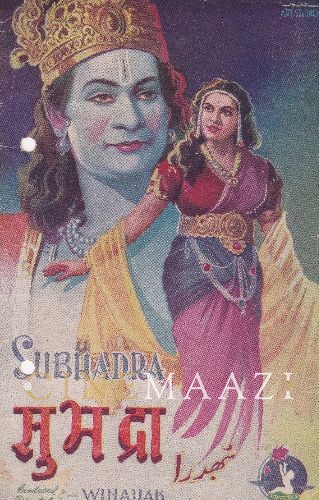
Subhadra 1946
-
Kiti Haasal 1942
-



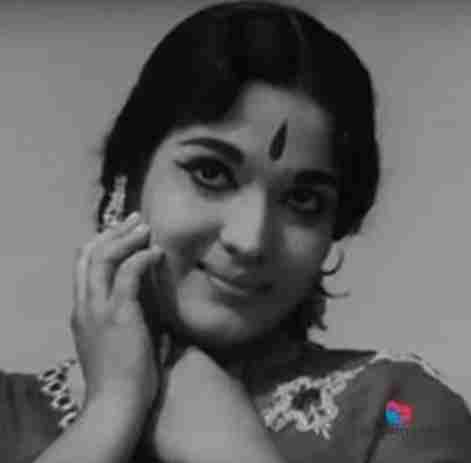

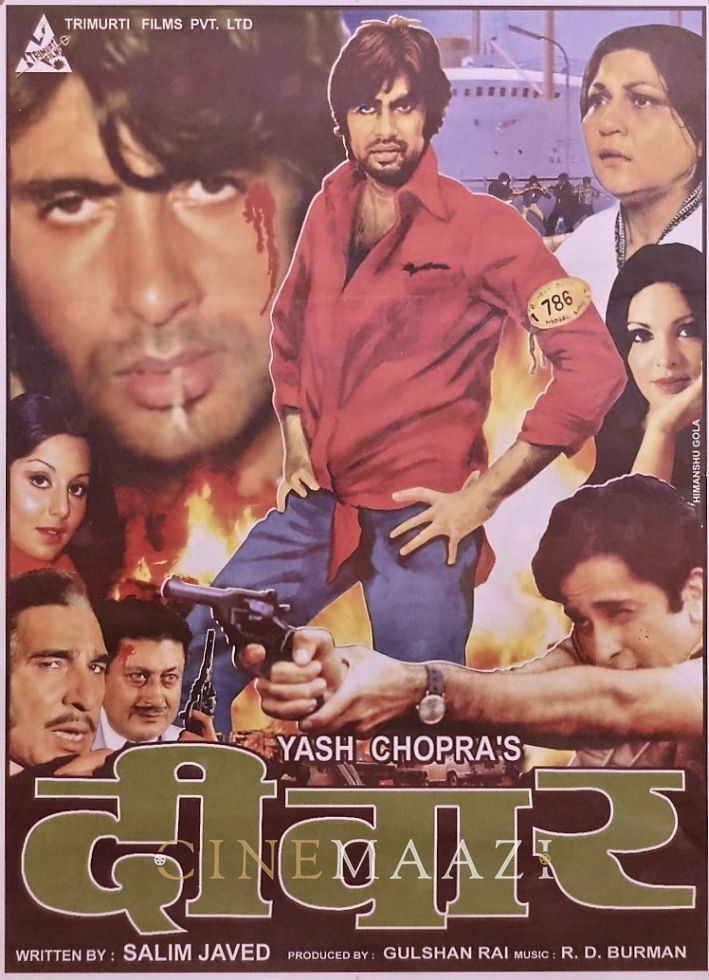
.jpg)

